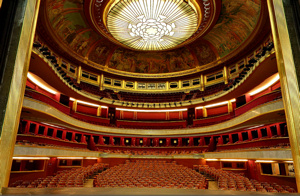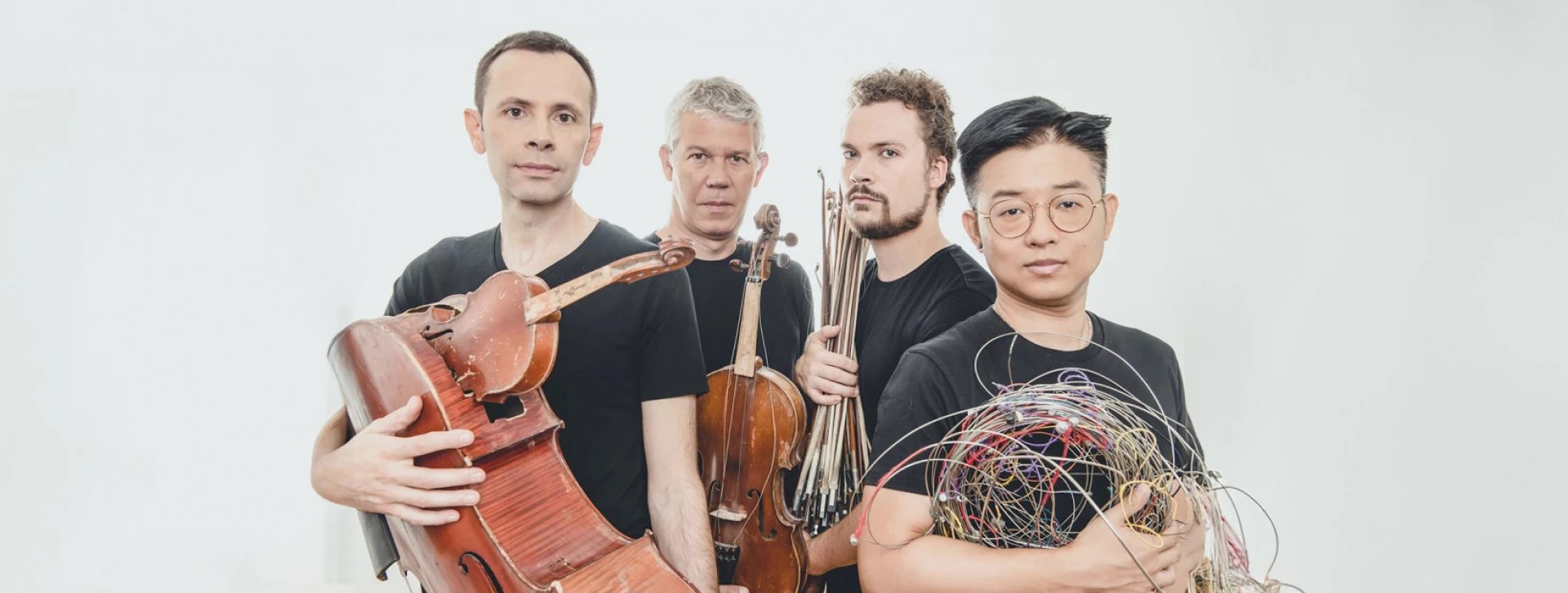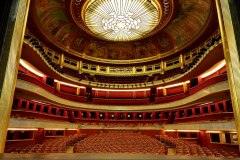Quatuor Diotima
December 2025 | ||||||
|---|---|---|---|---|---|---|
Mo | Tu | We | Th | Fr | Sa | Su |
The Diotima Quartet for an exploration of the string quartet in the 20th century and beyond!
In 1996, four young musicians, all graduates of the Paris Conservatory, decided to form a quartet together based on their tastes and affinities. Their chosen name: Diotima. Diotima is both an allegory of German romanticism – Friedrich Hölderlin names his life's love in his novel Hyperion – and a banner of contemporary music, raised by Luigi Nono in Fragmente-Stille, an Diotima. Since then, they have become a leading reference in the field of contemporary music, having collaborated extensively with many composers. This season, they are in residence on Avenue Montaigne, bringing contemporary chamber repertoire to life once again. Their first performance features Ravel’s String Quartet (1902), known for its highly developed sense of sound, unexpected harmonizations of the melodic line, and the cyclical intertwining of themes and motifs… this sets the stage for what follows. 25 years later, the Polish composer Szymanowski will remember it and infuse it with themes from his native folklore. To conclude, Terra Memoria by Finnish composer Kaija Saariaho. A rich and diverse offering of 20th and early 21st-century music, to be continued in February and June 2026.
Program and cast
Diotima Quartet
Programme
Ravel String Quartet
Szymanowski String Quartet No. 2
Saariaho Terra Memoria
Théâtre des Champs-Élysées

The Théâtre des Champs- Elysées is undoubtedly one of the finest venues in Paris . Built in 1913 , it has the distinction of having been designed by a group of artists architects Henry Van de Velde and Auguste Perret , the painter and sculptor Antoine Bourdelle , the painter Maurice Denis , and the crystal- René Lalique to do mention the main ones . He was the first Parisian theater to be built entirely of reinforced concrete.
Restoration of the Great Hall devoted to operatic performances , symphony concerts and dance was decided in 1985. Two years later , on 23 September 1987, the theater reopened its doors , completely renovated. Fifteen years after this important work it was decided to undertake a new renovation campaign , but to prevent the complete closure of the theater for an entire season , work is now carried by step during the summer . Then it is to replace aging equipment , to remedy wear certain parts of the theater and improve spectator comfort and artists during their visit . Thus in recent years, including the work involved the renovation of marble facade, replacing the carpet in the room with wooden floors , installation of a new fully decorated wooden concert to a significant improvement of acoustics, the orchestra pit and stage below .
The Théâtre des Champs- Elysées is now a modern working tool receiving each year nearly 300,000 spectators and a few thousands of artists and collaborators.
The Théâtre des Champs- Elysées , the jewel of French architecture of the twentieth century, was in 1953 one of the first buildings of contemporary architectural heritage to be classified as historic monuments . Since 1970 the Caisse des Dépôts owns the entire building 15 avenue Montaigne and principal patron of the theater.
For over a century, Théâtre des Champs-Elysées has been the place where the most celebrated artists have come to make their names in Paris. The world’s finest orchestras and world-class soloists have always been a fixture at the Theatre. Théâtre des Champs-Elysées presents more than 200 concerts each year and is renowned for its outstanding performances of all genres, from classical music concerts and staged opera to contemporary dance and jazz.
How to reach us:
Subway: Alma-Marceau (line 9), Franklin D.Roosevelt (line 1), Pont de l’Alma (RER line C)
Bus: n° 42, 63, 72, 80, 92
Taxi station: Place de l’Alma, corner of avenue George V
Car park: Alma George V. The entrance is in front of n° 19, avenue George V
Fixed rate depending on the length of the performance. Payment upon entering.

 EN
EN DE
DE IT
IT FR
FR ES
ES RU
RU JP
JP RO
RO
 Seating plan
Seating plan 